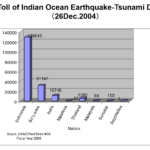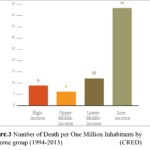When a large earthquake occurs at the bottom of the ocean, the ground suddenly lifts and sinks. This movement directly affects the surface of the ocean, creating large waves that spread far and wide. This is the typical way an earthquake-induced tsunami starts. Smaller earthquakes do not cause tsunamis because the shape of the ocean floor does not change much. Also, if an earthquake occurs very deep in the ocean, tsunamis do not occur because their effects do not reach the surface of the ocean. Large tsunamis are caused by huge earthquakes in deep ocean trenches, which are caused by the subduction of the Earth’s plates. In this type of earthquake, the ocean surface is pushed up or pulled down. On the side where the ocean is pushed up, the waves rise; on the side where it is pulled down, the ocean lowers. Which of the two is the first wave of a tsunami has a lot to do with how you perceive the danger and how you escape; the nature of the tsunami that hit Sumatra in 2004 (magnitude 9.0) caused the southern part of Thailand to be hit by a wave that pulled the ocean down, and the nature of this tsunami increased the damage.
Disaster Research Notes
Tadashi Nakasu's Homepage





